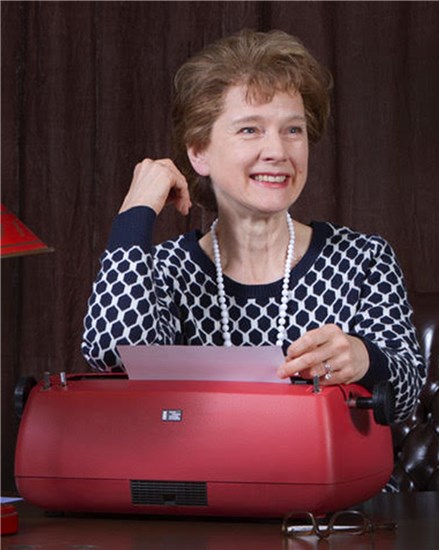

Erma Bombeck (1927-1996)
by Susan Marie Frontczak
Sponsored by the Richard and Mary Kemme Family Foundation
Through the second half of the 20th Century, Erma Bombeck captured – and lit with humor – the daily life of a new American phenomenon: the suburban housewife.
The 1960s do not stand in isolation, but are a product of the decades leading up to it. Sometime between 1910 and 1920 the place the majority of Americans called home shifted from rural to urban. During the war years 1941-1945 millions more moved to the cities for well-paying jobs. However a different kind of migration followed the war. By the end of the 1960s, some thirty million Americans had left their urban homes, settling nearby land masses collectively dubbed Suburbia. This flow did not slow in the decades that followed. By 1990 suburbia accounted for nearly half of the nation’s dwellings – and voters – outpacing both city and rural populations. Suburban living now dominates the economic, social, and cultural American pie chart.
What caused this suburban explosion? In the years following World War II, some twelve million men came home, discharged from the military (including Erma’s husband-to-be, who signed up at in 1945 at age 18 and was discharged in 1948). They wanted jobs – some of which were relinquished either eagerly or reluctantly by the women who held them. The veterans married (Erma and Bill Bombeck in 1949) and started families (their kids came in 1953, 1955, and 1958), launching the baby boom. These families wanted and needed housing. Anyone who lived through that time remembers the housing shortage. My own mother (born in 1924, three years before Erma Bombeck) told me, “In 1950 you didn’t give notice on your apartment unless you expected to die within the week.” A building boom ensued through the 50s and 60s in the land surrounding the cities, to house families that were generally supported by a bread-winner commuting into the city for work.
This left the housewives, like Erma, on the suburban frontier, to negotiate a brave new world rife with innovative if indecipherable time-saving technologies (including blenders, crock pots, electric can openers, and toaster ovens) and heretofore unimagined responsibilities (such as: Tupperware® parties, Little League® carpools, Girl Scout cookie drives, ballet recitals, PTA committees, and garage sales.) Erma Bombeck, of Dayton Ohio, believed you had to be able to laugh at life to get through it. She captured the essence of the housewife’s daily struggles in her column “At Wits End” three days a week eventually appearing in 900 newspapers across the country and in books such as “I Lost Everything in the Post-Natal Depression” and “The Grass is Always Greener Over the Septic Tank.”
Erma Bombeck made the middle class American housewife an American Legend – ironically by building a career as a writer, to document the lives of women like herself who made a career of homemaking. She brought to American awareness the life of millions of women whose lives otherwise often felt invisible and taken for granted. She let women across America know: You are not alone. In fact, we number in the millions. I, too, am an American housewife, and I will laugh by your side.
Recommended Reading
Bombeck, Erma. At Wit’s End. Newsday, Inc. 1967.
Bombeck, Erma. The Grass is Always Greener Over the Septic Tank. McGraw Hill, 1976.
Bombeck, Erma. If Life is a Bowl of Cherries, What Am I Doing in the Pits? McGraw Hill, 1978.
Bombeck, Erma. Aunt Erma’s Cope Book. McGraw Hill, 1979.
Bombeck, Erma. Motherhood: The Second Oldest Profession. McGraw Hill, 1983.
Colwell, Lynn Hutner. Erma Bombeck, Writer and Humorist. Enslow Publishers. Hillside, NJ. 1992.
Recommended for Youth
Bombeck, Erma. I Want to Grow Hair, I Want to Grow Up, I Want to Go to Boise. Children Surviving Cancer. Harper Collins, 1989.
Recommended for Teens
Bombeck, Erma. Just Wait Till You Have Children of Your Own. Illustrated by Bil Keane, creator of “The Family Circus” cartoon. Doubleday, 1971 / Fawcett (paperback) reissue edition, 1985.
Susan Marie Frontczak
Susan Marie Frontczak has given over 700 presentations as Marie Curie, Mary Shelley, Irene Castle, Clara Barton, and Eleanor Roosevelt across thirty-eight of the United States, and abroad in her eighteen years as a Living History scholar. Susan Marie also works with both adults and youth to develop their own Living History presentations. She authored the Young Chautauqua handbooks for Colorado Humanities and works with students throughout the state. As a teen Susan Marie competed with her mother to see which of them could snag the monthly Good Housekeeping magazine first, in order to read Erma Bombeck’s column. Now the challenge is to convey Bombeck’s humor along with the person behind the persona.
Bullet Points
- Erma Bombeck’s twice-weekly humor column “At Wit’s End” began in 1965 in the Dayton Journal-Herald.
- Less than a month after its first appearance, At Wit’s End was syndicated. She began to appear three times a week, reaching over 500 newspapers across the country by the end of the decade.
- Over the following 25 years, in addition to continuing her newspaper column, Erma Bombeck wrote for Good Housekeeping, lectured across the country, appeared twice a week on Good Morning America, created/produced a comic television series Maggie, and published a dozen books.
Quotes
“If Life is a bowl of cherries, what am I doing in the pits?”
“Housework, if done right, will kill you.”
“Never lend your car to anyone to whom you have given birth.”
“Don’t tell me about the scientific advances of the twentieth century. So men are planning a trip to the moon. So computers run every large industry in America. So body organs are being transplanted like perennials. Big deal! You show me a washer that will launder a pair of socks and return them to you as a pair, and I’ll light a firecracker.”
“If you can laugh at it, you can live with it.”
Timeline
1927 - Erma Louise Fiste is born in Dayton, Ohio.
1942 - Erma works as a copygirl at Dayton Journal-Herald, while attending Patterson Vocational High School. She meets Bill Bombeck, a copyboy.
1945 - Bill Bombeck signs up for the service. (WWII is still underway.)
1948 - Bill Bombeck returns from Korea.
1949 - Erma graduates from the University of Dayton. Erma and Bill are married.
1953-1958 - Erma and Bill have three children.
1964 - The Kettering-Oakwood Times hires Bombeck to write a weekly humor article about being a housewife, $3 each under the title “Zone 59” (the local post office code).
1965 - The Dayton Journal Herald hires Bombeck to write three housewife humor articles a week, $15 each, under the title “At Wit’s End.” A month later she is syndicated by Newsday. Begins spots on Arthur Godfrey’s radio show.
1966 - Bombeck is syndicated in 38 newspapers.
1967 - Publishes At Wit’s End, a compilation of her newspaper articles.
1969 - Bombeck starts a monthly article in Good Housekeeping.
1970 - Bombeck is syndicated in 500 newspapers; publishes I Lost Everything in the Post-Natal Depression.
1976 - Publishes The Grass is Always Greener over the Septic Tank about life in suburbia.
1978 - Publishes If Life is a Bowl of Cherries, What Am I Doing in the Pits?
1978-1982 - Serves on Presidential Advisory Committee for Women. Works for ratification of the ERA.
1983 - Publishes Motherhood: The Second Oldest Profession
1985 - Bombeck is syndicated in 900 newspapers.
1990 - Publishes I Want to Grow Hair, I Want to Grow Up, I Want to Go to Boise about children surviving cancer.
1996 - Erma Bombeck dies following complications from a kidney transplant.